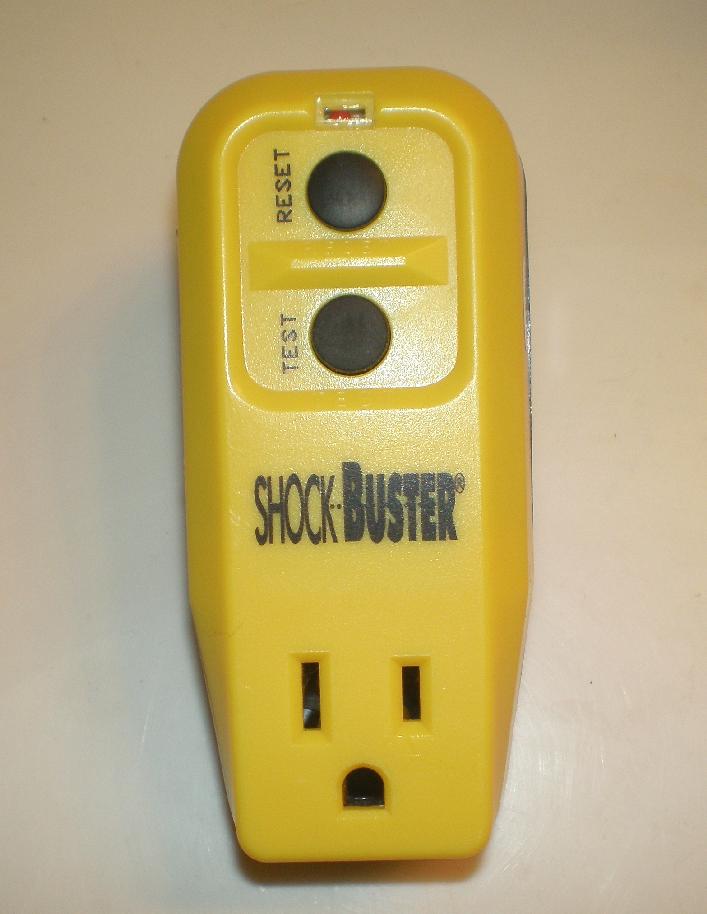Ground Fault Circuit Interrupters (GFCI)
A ground fault circuit interrupter is a safety device used to provide
electricity in a potentially wet environment. As you probably know,
water can conduct electricty, at least if it is not pure water. And the water
that we use and drink has a lot of other things in it, like chlorine,
calcium, sodium, etc.
The GFCI quickly shuts off power when it detects a problem. They typically
have two buttons, one for testing, and one for resetting.
When working with electrical devices in potentially wet environments, it
is a good idea to use a drip-loop. This is when you have the electrical cord
come down lower than the outlet and the device. So if the cord gets wet,
the water will travel down to the drip-loop and then onto the floor,
instead of travelling to the electrical device or to the outlet.
In this picture, you can see a stand-alone GFCI. In the back, it has a
3-prong connector so that you can plug it in to any wall outlet.
This one is from a home-brew supply store, and cost around $15.

In the picture below, we have a GFCI built into the wall. The buttons on it
have a low profile, and you might not even notice them. This is an
electrical outlet in a bathroom, next to a sink. There is a good chance
that your bathroom has a GFCI outlet built into the wall.

-Michael Weeks